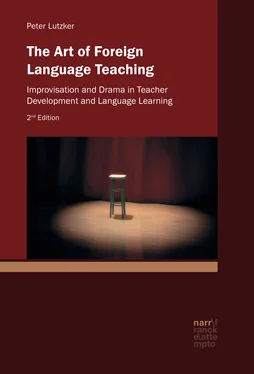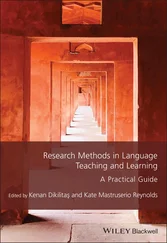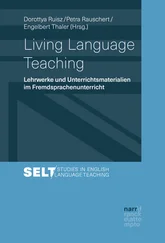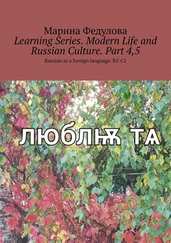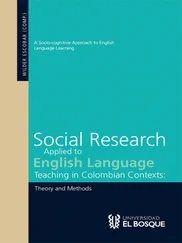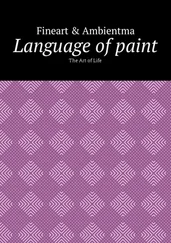The argument for training in this sense may go like this: ‘I believe that my effectiveness as a teacher depends largely on my pedagogic skills, and my knowledge of the topic I am teaching, and on all the associated methodology. My teaching is only as good as the techniques or materials that I employ, and I improve by learning more about them. I acknowledge that the kind of person I am affects my teaching, but I don’t really see what I can do about this other than by further training and by gaining experience.’
The part of me that argues for development may say things like: ‘I believe that my effectiveness as a teacher depends largely on the way I am in the classroom, on my awareness of myself and my effect on others and on my attitudes towards learners, learning and my own role. I value my facility with pedagogic skills and my knowledge of the topic, but it is the ‘me’ who operates them that primarily influences their effectiveness. I teach only as well as the atmosphere that I engender. I believe that education is change and that I will not be able to educate unless I am also able to change, otherwise my work will come to have a static quality about it that is not good for me or for my students.146
In the rationale that Underhill gives for taking a training course, it becomes evident that some elements which Widdowson and Tedick would ascribe to teacher education are also present in his understanding of teacher training. This plurality in the use and understanding of these terms reflects a general tendency in the literature.
It is evident that the distinctions which have been drawn between these types of programs do not lead to ‘right or wrong’ or ‘either-or’ conclusions. There is clearly a place at both pre-service and in-service levels for each. Moreover, as noted, the borders which are sometimes drawn between these approaches are, in reality, often more fluid than they might first appear. This will also become evident in the context of the empirical study of the clowning courses: as the responses of the participants make clear, even in the context of a clowning course emphasizing teacher development, there are dimensions of experience closely aligned to methodology and teacher knowledge which are concretely referred to in the teachers’ own evaluations of the work. This phenomenon of overlap can be seen as an indication of the problems inherent in attempting to reduce teaching into discrete components, insofar as such attempts may ignore the actual realities of how teachers learn, as well as how they teach.
2.1 In-Service Courses for Language Teachers – Rationale and Forms
Despite pronounced differences in the organization and forms of in-service courses for language teachers that exist between different countries and even within different regions of the same country, the rationale for the existence of such courses can be seen as sharing a broad, common basis. Christoph Edelhoff has listed what he considers to be the seven most common justifications for in-service courses:
To bring new scientific knowledge (in educational theory, in the subject, and in new socially relevant fields of learning) to the teacher
To implement new curricula and educational policies
To try out and implement new teaching material
To call attention to the demands and expectations of a changing society
To support and transport the development of teaching methods
To improve educational practice and adapt to new demands
To guarantee professional satisfaction and successful teaching147
Implicit in traditional approaches to in-service training is the assumption that becoming familiar with the newest research is imperative and that teachers should always be willing to adopt the latest methods. At the same time this implies that what they are doing is always a step behind. Legutke points out,
While practitioners are concerned with the application of previous concepts, researchers are already busy with new ones. Under these premises, the working knowledge of teachers is invariably seen as deficient. Since the models designed by educational science can rarely be directly translated into practice in the expected manner, the actual practice of teachers also appears deficient. Teachers are thus always not yet or not quite where they should be, according to the expectations of science and their obligatory in-service training.148 (italics in original)
The typical structure of in-service courses begins with an initial lecture from an external expert, followed by a discussion and finally the practical implementation of the research in the classroom. However, in the last decades there has been a gradual recognition of the problems inherent in conducting such courses as a kind of continuation of pre-service training with external authorities informing teachers how to improve their work through incorporating the newest research findings and methods into their daily practice. Such modes of instruction in an in-service context have increasingly been seen not only as inappropriate, but also as largely ineffective. There is clearly an underlying contradiction, for example, in attempting to get teachers to adopt new innovative practices encouraging learner autonomy and a more collobarative approach to learning through training courses using that same traditional methodology which is being criticized as outdated and ineffective.
The practice of providing short courses spaced apart at long intervals has also begun to change with the realization that the frequency and intensity of professional contact is decisive in affecting significant change. Legutke argues that this new understanding of in-service training not only reflects a deeper understanding of the decisive role of the learner in constructing his own knowledge, but also an increasing recognition of the biographical and career phases which teachers go through:
Professional learning is seen as a holistic and complex process in the course of which not only cognitive capacities are addressed and extended, but affective factors must be equally taken into account, along with practical-sensory activities and skills. Since understanding and integrating something new always engages the teacher as a whole person and must also be understood as the enhancing of existing potentials, it is evident that teacher development courses face complex challenges.149
In a similar vein, Ulrich Hermann and Herbert Hertramph have suggested that in-service training has to become more specifically oriented towards addressing the different challenges teachers face in different phases of their careers:
Teacher development seen as personal development has to address the different stages in the course of an individual’s professional biography : the initial difficulties in entering the profession, the establishment of routines, breaking out of routines, overcoming crises and professional burn-out, interest in further qualifications (extended or higher professional qualifications), taking on new roles, such as mentoring, working on a professional advisory board, or doing school social-work.150 (italics in original)
Such perspectives are relatively new. Until the second half of the 1980s the emphasis in all types of in-service programs for language teachers was on training, and not on education and/or development. It was only in the 1990s that an interest in language teacher education and development gradually began to grow.
In his detailed overview of the types of courses presently offered to language teachers, Jack C. Richards, one of the leading figures in this field for over thirty years, discusses 11 types of procedures and approaches that are now commonly offered to advance professional development of language teachers: workshops, self-monitoring, teacher support groups, journal writing, peer observation, teaching portfolios, analysis of critical incidents, case analysis, peer coaching, team teaching and action research.151 Richards considers the wide range of approaches which are now offered, including both numerous possibilities of teacher development and training, to be an essential and highly positive step in the evolution of in-service programs for language teachers.152
Читать дальше
